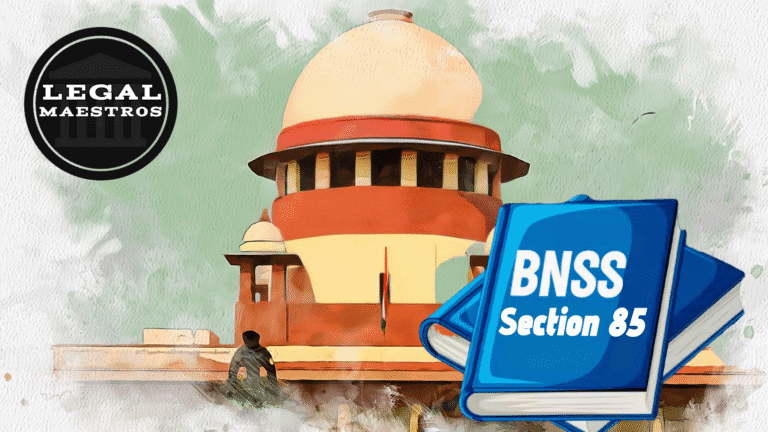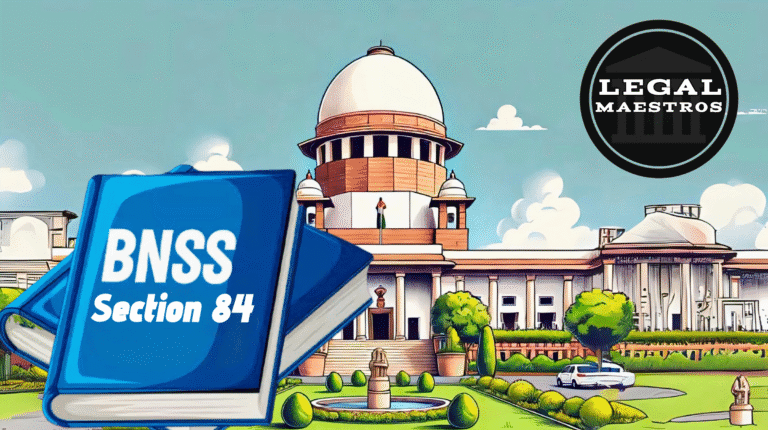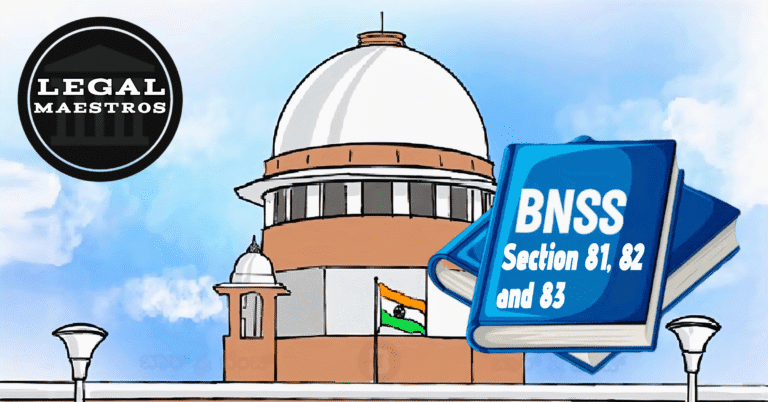
Section 9 – Courts of Judicial Magistrates
The establishment of Courts of Judicial Magistrates in each and every district is made possible by the legal foundation that is provided by Section 9 of the Sanhita. Following consultation with the High Court, it gives the State Government the authority to choose the number of such courts and where they will be located. In this way, magistrate courts are made available in a variety of places, taking into account the population and the requirements of such regions.
In each and every district, the law requires the establishment of a certain number of Courts of Judicial Magistrates of the first class and of the second class, depending on the requirements of the jurisdiction.
It is the responsibility of the State Government to determine the appropriate locations for the establishment of these courts. On the other hand, the State Government is not able to make this decision on its own; rather, it is required to communicate with the High Court prior to notifying the establishment of these courts or the location of their establishment.
For any queries or to publish an article or post or advertisement on our platform, do call at +91 6377460764 or email us at contact@legalmaestros.com.
Not only that, but the provision also contains a significant phrase about Special Courts. It is possible for the State Government, once again in conjunction with the High Court, to establish one or more Special Courts of Judicial Magistrates of either class for a particular local region. In order to try a specific case or a certain category of cases, some Special Courts have been established.
Once such a Special Court has been constituted, no other magistrate court in that particular region would have the authority to make decisions about the cases that have been defined. This clause ensures that sensitive or difficult matters are handled by courts that have been specifically designated for that purpose, which ultimately results in judicial proceedings that are more focused and effective.
As an illustration, let’s say that a district is dealing with a significant number of incidents of cybercrime. It is possible that the government may establish a Special Court of Judicial Magistrates in that district that would be dedicated to the subject of cybercrime.
For any queries or to publish an article or post or advertisement on our platform, do call at +91 6377460764 or email us at contact@legalmaestros.com.
From that point forward, the Special Court would be the sole recipient of any cases involving cybercrime that occurred inside the designated region.
In accordance with the provisions of the second sub-section of Section 9, the High Court will be responsible for the appointment of the judges and presiding officers of these courts. It is imperative that this be done in order to preserve the competent and independent nature of the judicial system.
The High Court is granted the authority to confer the powers of a Judicial Magistrate of either class to any member of the State’s Judicial Service who is actively acting as a judge in a civil court.
For any queries or to publish an article or post or advertisement on our platform, do call at +91 6377460764 or email us at contact@legalmaestros.com.
This authority is granted by the third sub-section of the statute. Because of this flexibility, judicial resources are able to be utilized effectively across a wide range of cases, which is especially beneficial in districts that are either smaller or have fewer staff members.
Section 10 – Chief Judicial Magistrate and Additional Chief Judicial Magistrates
Judicial Magistrates who hold higher-ranking positions are the subject of Section 10, which addresses them.
It begins by stating that the High Court is required to designate a Judicial Magistrate of the first class to serve as the Chief Judicial Magistrate in each and every district under its jurisdiction.
For any queries or to publish an article or post or advertisement on our platform, do call at +91 6377460764 or email us at contact@legalmaestros.com.
The Chief Judicial Magistrate is an important figure in the judicial hierarchy of the district. This individual is responsible for overseeing the work of other judges and making decisions regarding significant cases.
This provision gives the High Court the authority to appoint one or more Additional Chief Judicial Magistrates, as stated in the second sub-section. The High Court may determine that these magistrates have all of the powers that are granted to the Chief Judicial Magistrate, either in their entirety or in part, depending on what the High Court specifies.
It is because of this that the workload of the Chief Judicial Magistrate may be appropriately distributed, which is especially important in districts that are either vast or very active.
For any queries or to publish an article or post or advertisement on our platform, do call at +91 6377460764 or email us at contact@legalmaestros.com.
Specifically, the appointment of Sub-divisional Judicial Magistrates is the topic of discussion in the third sub-section. In this capacity, the High Court has the authority to delegate the responsibility to a Judicial Magistrate of the first class in any of the sub-divisions. In their various sub-divisions, these magistrates are responsible for administrative and supervisory duties associated with their positions.
It is also within the High Court’s authority to release them from these obligations in the event that it is deemed necessary.
The fourth sub-section grants the Sub-divisional Judicial Magistrates the authority to exercise supervision and control over the other Judicial Magistrates within their sub-division, with the exception of the Additional Chief Judicial Magistrates.
For any queries or to publish an article or post or advertisement on our platform, do call at +91 6377460764 or email us at contact@legalmaestros.com.
The Chief Judicial Magistrate is the one who has the authority to exercise broad control over this authority. The decision about the scope of these supervisory powers is made by the High Court, which may issue either general or particular orders.
Let us take a little example into consideration. Let’s say that District X is subdivided into three different areas: A, B, and C to be specific. There are multiple Judicial Magistrates assigned to each sub-division.
The position of Sub-divisional Judicial Magistrate is filled by a Judicial Magistrat who is appointed by the High Court from among those who are in Sub-division A. In addition to reporting to the Chief Judicial Magistrate of District X, the individual in question will be vested with the ability to oversee the judicial operations of other magistrates in Sub-division A.
For any queries or to publish an article or post or advertisement on our platform, do call at +91 6377460764 or email us at contact@legalmaestros.com.
The increased coordination, efficiency, and accountability that are brought about by this layered structure in the justice delivery system are all benefits.
Section 11 – Special Judicial Magistrates
Section 11 introduces the concept of Special Judicial Magistrates. These are not part of the regular magistracy but are appointed under special circumstances to deal with specific cases or classes of cases.
According to sub-section one, the High Court may appoint Special Judicial Magistrates on the request of the Central or State Government.
For any queries or to publish an article or post or advertisement on our platform, do call at +91 6377460764 or email us at contact@legalmaestros.com.
These appointments are restricted to people who currently hold or have held a government post. These individuals may be granted the powers of a Judicial Magistrate of the first or second class, but only for specific cases and only within a defined local area.
However, the law clearly states that such powers can only be granted if the person meets the qualifications and legal experience prescribed by the High Court through its rules. This safeguard ensures that only competent individuals are appointed as Special Judicial Magistrates.
For instance, if a retired district collector with a legal background is asked to serve as a Special Judicial Magistrate to oversee a set of land dispute cases in a remote area, the High Court may grant him such powers for a limited duration, provided he meets the required qualifications.
For any queries or to publish an article or post or advertisement on our platform, do call at +91 6377460764 or email us at contact@legalmaestros.com.
Sub-section two limits the term of appointment for Special Judicial Magistrates to one year at a time. This term can be extended, but each appointment must be renewed separately by the High Court through a general or special order. This time-bound approach ensures regular review of appointments and prevents misuse of power.
Such Special Judicial Magistrates play a vital role in reducing case backlogs and handling specific legal challenges, especially in areas facing unique issues such as environmental violations, industrial disputes, or social unrest. Their temporary nature and focused mandate allow for efficient resolution of particular matters without burdening the regular court system.




![Research Assistantship @ Sahibnoor Singh Sindhu, [Remote; Stipend of Rs. 7.5k; Dec 2025 & Jan 2026]: Apply by Nov 14, 2025!](https://legalmaestros.com/wp-content/uploads/2025/11/Gemini_Generated_Image_s0k4u6s0k4u6s0k4-768x707.png)
![Karanjawala & Co Hiring Freshers for Legal Counsel [Immediate Joining; Full Time Position in Delhi]: Apply Now!](https://legalmaestros.com/wp-content/uploads/2025/11/Gemini_Generated_Image_52f8mg52f8mg52f8-768x711.png)
![Part-Time Legal Associate / Legal Intern @ Juris at Work [Remote]: Apply Now!](https://legalmaestros.com/wp-content/uploads/2025/11/ChatGPT-Image-Nov-12-2025-08_08_41-PM-768x768.png)
![JOB POST: Legal Content Manager at Lawctopus [3-7 Years PQE; Salary Upto Rs. 70k; Remote]: Rolling Applications!](https://legalmaestros.com/wp-content/uploads/2025/11/ChatGPT-Image-Nov-12-2025-08_01_56-PM-768x768.png)